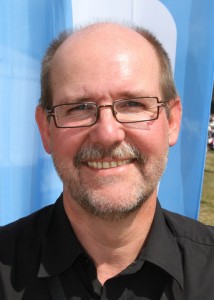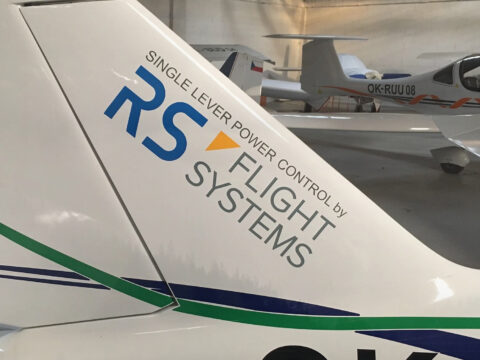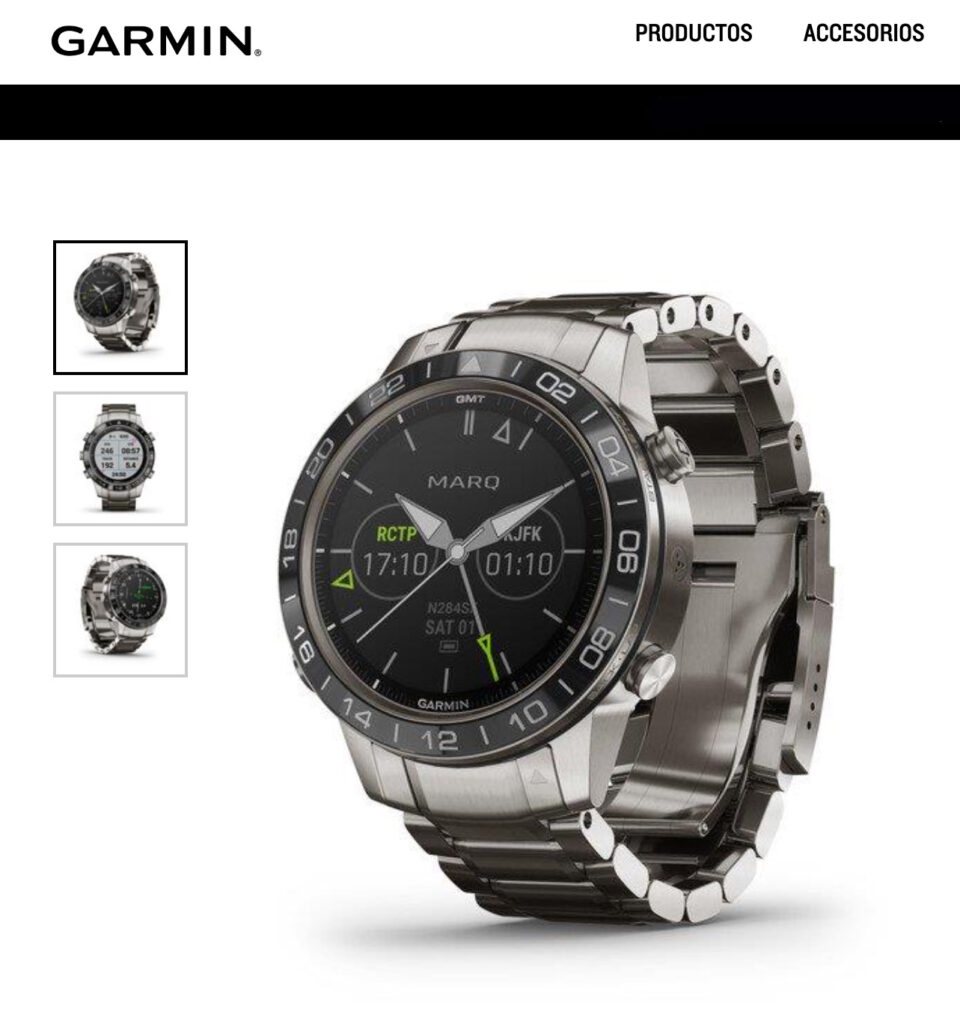
RNN:It is an honor to be able to sit down and talk to the inventor on the CANaerospace Protocol, Mr. Michael Stock. Thank you and welcome to Sun-n-Fun 2012!
MS: No thank you. It is great to be here.
RNN: Let’s start off with the basics. What is a CAN Bus?
MS: The CAN Bus like many other serial databuses combines data on one end and serializes it and sends it over the bus at a very high speed so it can be re-tracked on the other end. Basically it is there to save wires. If we were to transmit information on dedicated wires we would have a huge bundle. And the Bus actually reduces that to two wires and the information is transferred over the bus in a serialized format.
RNN: So this gives a a great weight saving and a simpler installation?
MS: Exactly.
RNN: Can you give us a brief history on the CANaerospace Protocol?
MS: I am an electronics engineer and I became employed with a company called Messerschmitt-Bölkow-Blohm in the mid 80’s. I started to work on the helicopter flight controls division of what is now known as Eurocopter. And at that time we were not using many data busses, simply cause there were not to many available in the aviation world. Around that time, 1985, Bosch came up with a data bus that was originally designed for automotive use, call the Controller Area Network, or CAN bus.
We immediately started to use that bus, initially for flight simulation. At that time we did not have any protocols based on that databus. So it was really a very rudimentary bus for transmitting information back and forth, but there was no standardization in any way. Standards came up later, but all of these were targeted towards the automotive industry or the factory automatization industry, so they were not really suitable for the aviation industry. In 1998 I finally went ahead and defined a standard that would turn CAN into a data bus that is really suitable for aviation purposes. And I called this protocol that sits on top of the canbus “CANaerospace” and it has been around since. In the meantime, we are approaching version 2.0 and initially it was used at Eurocopter and then I made it available on the internet and finally with the AGATE programme conducted here in the USA, around the year 2000, NASA got involved with me and standardized the CANaerospace Protocol as the AGATE Databus. The the whole thing moved up to the general aviation world and then starting from this it took about 10 years until companies in GA were using it, and nowadays we have a couple of glass cockpit panel manufacturers using CANaerospace in their products. We have entire avionics suites in General Aviation that use CANaerospace within their system.
RNN: How did you become involved in the 912 iS programme.
MS: In 2003/2004 I got involved with Diehl Avonics who were at that time doing a full authority digital control system under contract from Rotax for the former 936 engine, which actually was never produced. Nevertheless the CANaerospace protocol was used as the databus interface to the cockpit. When Rotax started to create the 912 iS engine, they knew the protocol worked very well with the 936 and they reused it for the 912 iS. I got involved again in adapting it for the 912 iS ECU. This now really caused the use of the CANaerospace bus gaining momentum as it being used in an engine that is going into production. Nowdays the CANaerospace bus is being used in numerous research aeroplanes like the Stratospheric Observatory For Infrared Astronomy (SOPHIA), a Boeing 747 that carries a large telescope manufactured by German companies and there are quite a number of CANaerospace busses that do real time control throughout the fuselage of that aircraft. Many other research and experimental aircraft are using CANaerospace busses for closed loop control purposes within the aircraft itself.
RNN: So does CAN harness come standard with the 912iS or is it something that we have to add on?
MS: Actually it comes standard with the engine. For the 912 ULS engine, you still have a lot of sensors that are attached to the engine and lots of dedicated wires running to the cockpit. In the cockpit you had dedicated instruments displaying that information. Now the the 912iS the CANaerospace is coming in as the standard and replaces all these dedicated wires. So there is no more conventional instrumentation possible with the 912 iS.
RNN: So you cannot run analog gauges and things like that?
MS: That is right. It is actually a dual redundant CANaerospace databus system that goes from the engine to the cockpit, and carries all the information that is required by the pilot. That also means that the interface is reduced to only 4 wires.
RNN: I guess this is an important time to look at what a pilot can use for gauges. You work closely with Rotax with the wiring, but along the way you also developed a device to read the information coming across the CANaerospace Bus? The Engine Monitoring Unit?
MS: That is right. It is the Engine Management Unit really.
RNN: Not monitoring unit?
MS: Management. We are taking it to the level of engine management as it does a lot more than just give the indication to the pilot. First, and most important thing of course, is the pilot’s display. So through the Engine Management Unit you got the RPM, the manifold pressure and all the temperature and pressures that you need to safely operate the aircraft, by having the engine information. But together with this comes a lot of secondary information that is transmitted by the ECU over the databus. And that secondary information is the status of sensors and the data and the status of the engine itself. Thirdly, the engine management records all this data onto an SD memory card. With this we have the lifetime history of the engine stored on an SD memory card, together with timestamp and GPS data. This information can be used for later post data processing.
RNN: So not only did you invent the wiring for the engine, it also invented a great way for pilots to access this information.
MS: Right. That is coming with the standard. The CANaerospace standard just has the advantage that all the data that is flowing over the busses is easily readable and can be stored and can be post processed in a very standardized way.
RNN: What makes this one of the best units out there?
MS: First of all, the Engine Management Unit is not just any engine display which has been adapted to the 912 iS. It has been designed along with the engine and provides the required redundancy and electrical isolation required to maintain the integrity of the overall 912 iS system. Also, it provides 912 iS specific information like cold start procedure guidance which have been verified by flight test. Finally, the EMU has demonstrated during flight tests that it works flawlessly under temperatures as low as -18 degrees Celsius and altitudes of up to 18.000ft. Another aspect is that with the 912iS engine, for the first time in the GA world, the ability of having the engine lifetime information (Things only known to jet engine users before) is now coming to the piston engine world. This gives a lot of additional advantages in terms of maintenance, in terms of troubleshooting, and in terms of monitoring the engine over the lifetime and predicating any problems at an early stage.
RNN: What other details would you like to share with us?
MS: It is important to realize that the ECU has two sets of redundant CANaerospace busses. One is dedicated to the display in the cockpit (this is the one that the Engine Management Unit is connected to.) The other set of data busses is dedicated to the maintenance that is supported by the dongle from ROTAX. We are not interfering at all. So if the Engine Management Unit is installed, the engine maintenance busses are still accessible by the USB Dongle and can be used to interact with the CPU. So the major difference here is that over the display bus I only interact with the ECU in order to read data from it. I just read information that the ECU sends. while over the maintenance bus, the dongle can actually interactively reprogram the ECU. That was kept separate so that we can have a certifiable way matching an engine display to the ECU without interfering with the internal functions of it.
RNN: So there is no way the pilot can reprogram the engine by just touching buttons?
MS: That is right. The pilot can read the data. The data can be formatted in any way, be post processed. He has all the indications in the cockpit, but he cannot give commands to the ECU. Nevertheless, the pilot can adapt the EMU display to his needs in terms of displaying metric versus US units and the like.
RNN: Now all this information allows you to build in extra features.
MS: Yes. The Engine Management Unit comes with the EMDS or Engine Management Debriefing Software. This software runs on any computer (Windows, MAC or Linux) and it can be downloaded from the web. The data that is recorded on the SD card in the engine management unit can be loaded by this software and visualized in many forms. You can visualize the data in sort of a post flight mode, just like a cassette tape recorder. You can scroll through the entire flight and look at the data at any point, zoom into it and look at details. It also has a mode that you can look at engine details and go through the flight just as if you were sitting in the aeroplane and you can replay your flight on the ground with it.
RNN: I know you have just released the EMU, but I know quite a few engineers and I know they have many future plans for their designs. At this early stage, am I allowed to ask you what you think some of the future features will be?
MS: Let’s talk about new features then. (Laughs)
RNN: Before we continue, let’s get it clear that as of right now there is everything that a pilot needs to monitor and manage his engine.
MS: Right.
RNN: I hear you may have some new ideas or plans for the future models?
MS: Well the first thing which is upcoming very soon, is that we take the GPS data that is recorded with the engine data in the engine management unit, and convert it into the KML file format that can be used with Google Earth. That would allow the pilot to visualize his flight path. That would give him the position on earth, that would give him the speed, and that would give him the altitude and the track he is flying. Together with dedicated points that he can display his fuel consumption, his RPM, his oil pressure or whatever. So that gives a 3D visualization of the engine during flight and the possibility to find out what really your savings and fuel consumptions are. What were your power settings, what was the resulting fuel consumption that you had and he will also see the performance of the airplane together with the engine data and together optimize your behavior as a pilot in the airplane to save as much fuel as possible.
RNN: That sounds amazing.
MS: It is. It is a new world.
RNN: Where will pilots be able to purchase the Engine Management Unit?
MS: Good question. Pilots will be able to utilize the existing Rotax support network and all the independent Service Centres’ will carry it.






